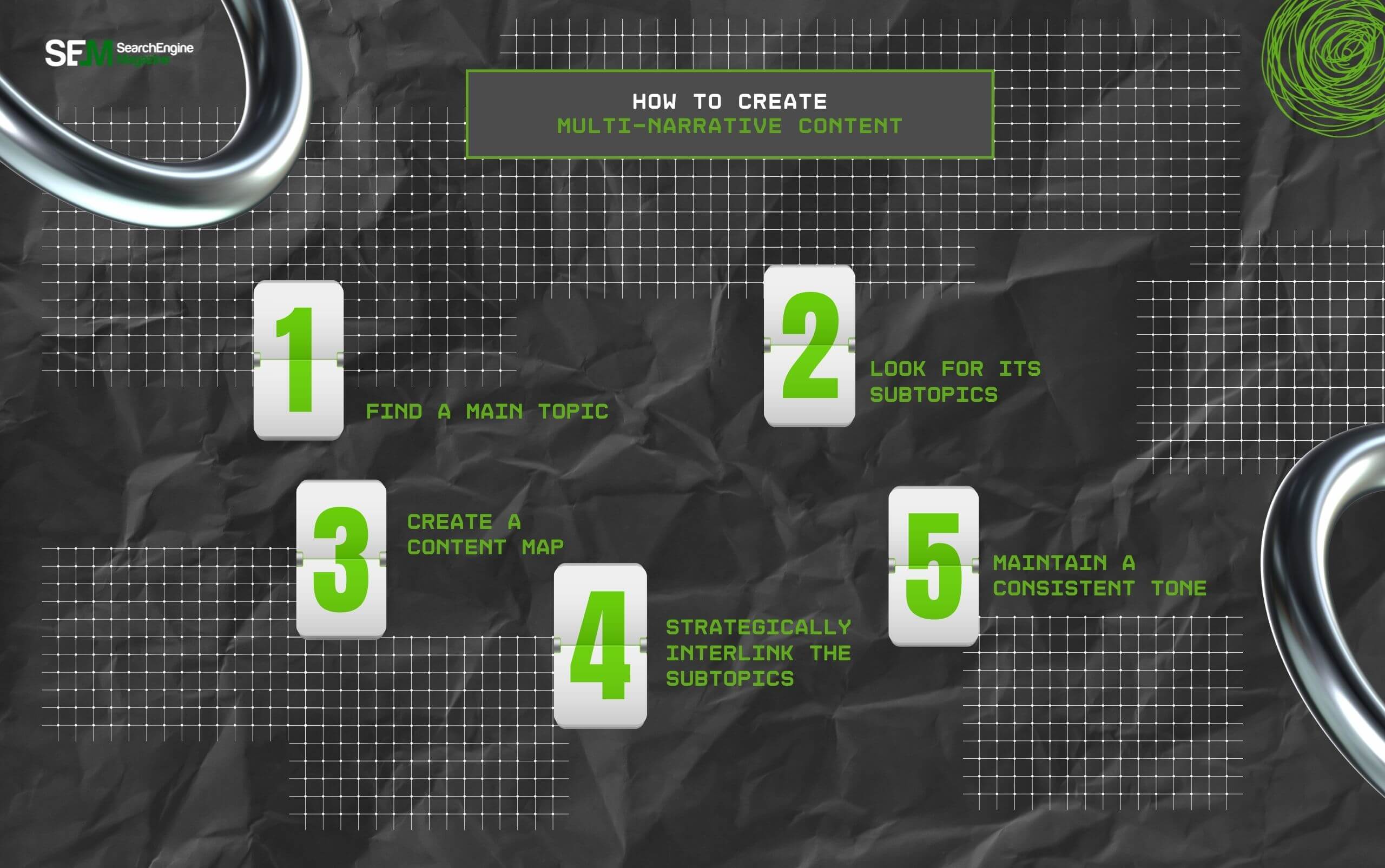What Does ML Mean In Text? Decoding The Social Media Lingo
Nov 28, 2025

Nov 28, 2025

Nov 28, 2025

Nov 28, 2025

Nov 28, 2025

Nov 27, 2025

Nov 27, 2025

Nov 26, 2025

Nov 26, 2025
Sorry, but nothing matched your search "". Please try again with some different keywords.


» Your topics | Multiple stories is a new approach to content creation. It refers to the creation of multiple context content under one single umbrella topic.
» Multi-perspective content helps in creating a web of unique and interrelated stories.
» This new approach helps with catering to the diverse audience’s needs, bringing in organic traffic and online visibility.
As a blogger and content creator, it is my top priority to create compelling content to keep my audience engaged.
But with global digitalization, audiences are diversifying. And, so are their needs.
So, a single topic exploration is not enough to keep them engaged. That’s where Multi-Perspective Content comes into play.
This new approach provides multiple narratives for a single umbrella topic. So, your readers get different perspectives on the topic — catering to their varied needs.
And, by delving into the diverse layers, you can create simpler content that ranks and keeps the readers captivated.
Well, for that, you need to have a clear idea about— Your Topics | Multiple Stories. So, in this blog, I have explored—
Stay tuned!
The phrase “Your Topics | Multiple Stories” refers to a new approach to content creation where multiple perspectives are explored under a single topic.
This helps in delivering a richer and more meaningful experience for the audience.
Basically, by combining the different narratives, formats, and insights, a multi-perspective approach brings in a unified topic exploration.
So, creating a web of unique stories that are complementary to each other.

Some of the key features of the multi-perspective content are:
First things first, in multiple-stories content, different layers are explored. So, you create diverse-layered content that caters to a wide range of audiences.
In addition to this, all the perspectives are tied back to one main umbrella topic. So, creating a unified theme across the different stories.
Finally, the diverse perspectives focus on the varied needs of your audience. Giving them curated and tailored content exploring exactly what they care about.

Given that people are looking for diverse layers of complex topics, a single-aspect exploration cannot sufficiently cater to their needs.
So, naturally, multiple context exploration is required. Here’s why it is important.
First things first, a diverse exploration of the topic helps in providing a comprehensive understanding. So, your audience gets a clear idea about the different dimensions.
In addition to this, your content becomes more user-intent focused. As you explore different aspects, you increase your chance of internal linking and enhancing your SEO performance.
Moreover, with a diversified audience, your content needs to resonate with them to engage them. So, delving into the different dimensions, you can cater to their needs, connecting with them virtually.
Additionally, when you pursue different aspects under the same topic, you position yourself in an authoritative place. And, this can help in increasing your conversion rates.
Finally, with internal linking, you can make your readers interact with all the related content and improve your on-site time. This way, you can drive organic traffic to your website by reducing the bounce rate.

Now, to create multi-narrative content, you need to explore different angles rather than repeating the same thing over. So, follow these simple steps to create compelling multi-perspective content.
When you are looking for a main topic, choose something broad enough to support multiple subtopics. gathering website content the Content Collection way shows how one umbrella topic can branch into many related pieces. If you pick “SEO strategy,” you can spin off countless content about:
Once you have finalized on your main topic, you need to choose a niche for your subtopics. You can decide this based on the formats of the different aspects.
For instance, for the “SEO strategy” topic, you can choose—
After you have decided on the subtopic category and format, you need to create a content map. This will help you to interlink the different subtopics with the main topic.
Additionally, you can set the dates, focus keywords, and content formats for each type. So, you can simply follow through the calendar and cover all the subtopics.
This is the most crucial step. Now that you have all the content ready, you need to tie them all together through internal linking.
So, your readers can navigate through the interlinked content and engage with the website more. That is, enhancing your engagement metrics and reducing bounce rates.
Even though the different content varies from each other, you need to adhere to a specific tone. This consistent tone helps in making your audience feel connected.
In addition to this, it is easier to link your multiple content within a single context. So, you need to maintain a brand tone across them all.
Although it seems easy to create multi-perspective content, there are certain challenges that you might face while doing them.
To overcome these challenges, you need to keep a few things in check while creating multi-narrative content.
Creating — Your topics | Multiple stories — is more than a simple content strategy. It is a strategic method to improve your digital visibility, audience engagement, and website SEO performance.
So, you need to follow the right steps and take the proper measures to create compelling and interactive multi-narrative content.
Moreover, with the constant diversification of the digital audience base, multiple aspects are the need of the hour. And, ignoring it can impact your SEO performance drastically.
So, go ahead and delve into the varied dimensions of your content topics to drive organic traffic and improve your rankings today!
There is no fixed number for creating multiple-perspective content. However, it is better to stay within a range of 5-7 content under each topic to enhance the SEO performance.
By using different formats and avoiding similar keywords, you can avoid content repetition. Moreover, focusing more on unique aspects and user queries can also prevent content duplication.
Using the technology, you can explore the diverse dimensions of a single topic. Along with that, you can use the AI tools, VR, and AR to amplify modern storytelling with interactive content.
Barsha is a seasoned digital marketing writer with a focus on SEO, content marketing, and conversion-driven copy. With 7 years of experience in crafting high-performing content for startups, agencies, and established brands, Barsha brings strategic insight and storytelling together to drive online growth. When not writing, Barsha spends time obsessing over conspiracy theories, the latest Google algorithm changes, and content trends.
View all Posts
What Does ML Mean In Text? Decoding The Soc...
Nov 28, 2025
What Does DTM Mean In Text? One Acronym, Mu...
Nov 28, 2025
What Does HY Mean In Text? Deciphering Its ...
Nov 28, 2025
Is PeopleLooker Legit? Finding Public Backg...
Nov 28, 2025
Longest Snapchat Streaks: How To Trend With Y...
Nov 27, 2025

